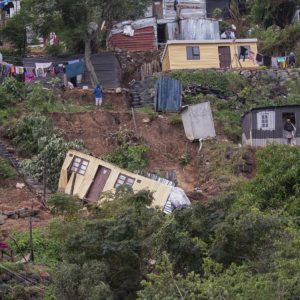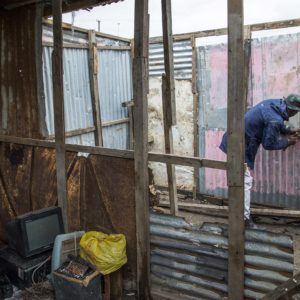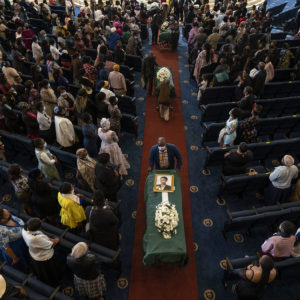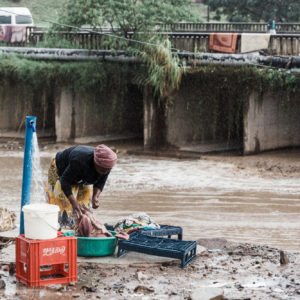‘The floods are a real call to conscience’
The deluge in KwaZulu-Natal is part of unpredictable weather patterns that will only worsen in cities with infrastructure already failing. Society needs to rally for change now.
Author:
6 May 2022
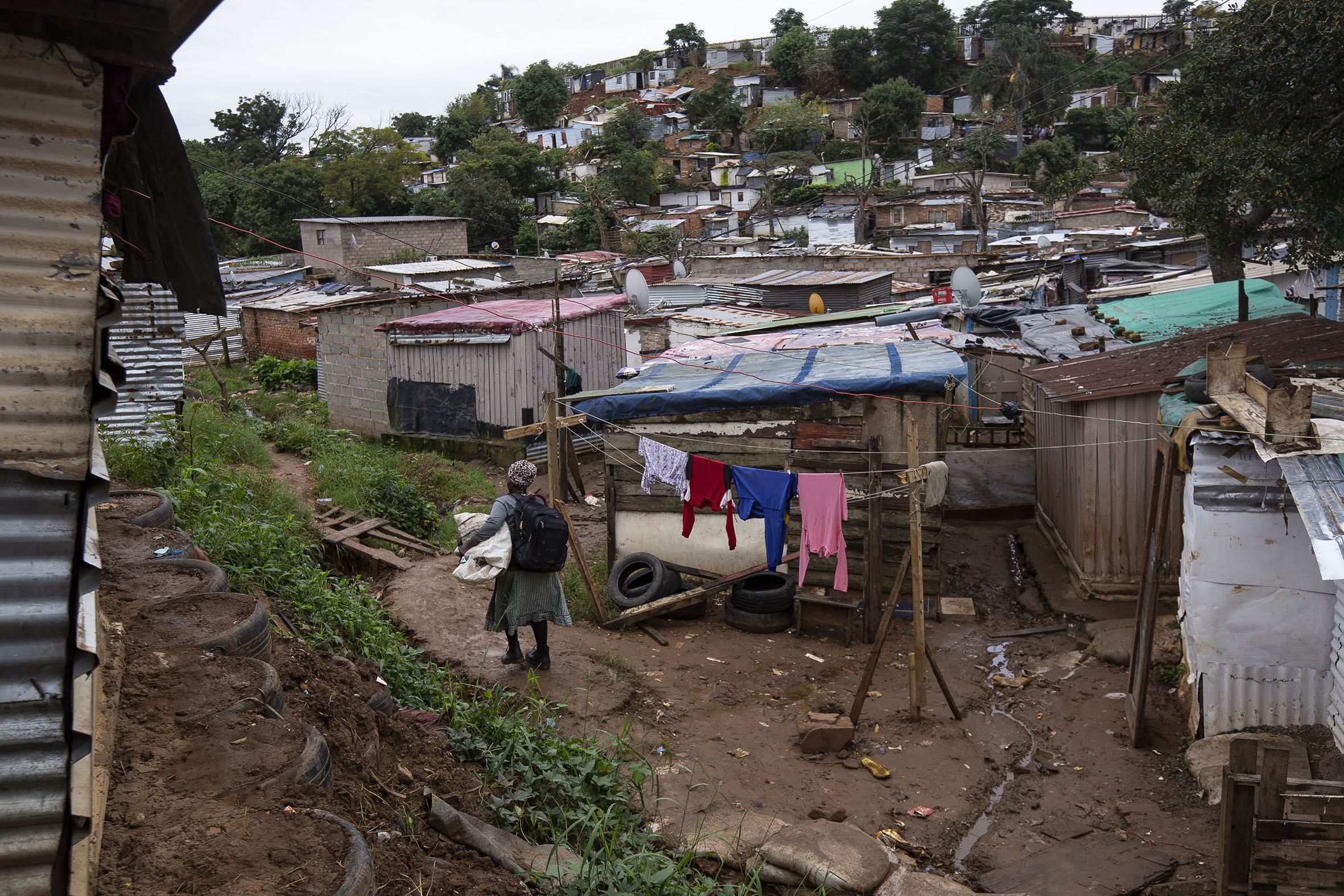
The anguished faces of the bereaved from the floods that devastated KwaZulu-Natal stare up from social media posts along with images of the deluge of mud, flattened houses, gouged roads, ripped-apart bridges, mangled metal, broken furniture, rotting rubbish and sodden mattresses drying slowly in the sun.
As KwaZulu-Natal rebuilds, kindness eases the otherwise bleak picture, but what soothes the broken province will not fix it. The KwaZulu-Natal Institute of Architecture chairperson Sikhumbuzo Mtembu says climate change makes it difficult to predict the severity and frequency of natural disasters, but the floods illustrate the need for the city to engage urgently with built industry professionals rather than exclude them from planning.
“We need to innovate around a host of issues to create resilient cities. The level of neighbourliness during this difficult time demonstrates the spirit we need.”
Related article:
Durban architect Richard Stretton bemoans poor town-planning and the lack of infrastructural investment in Durban. Both resulted in an increase in hard-surface areas and a reduction in natural spaces that act as sponges to soak up more rain falling faster and more frequently because of climate change.
Globally, built industry professionals are increasingly using digital tools to better understand the natural absorbency of cities at scale. Stretton says: “We need to better manage and plan our water infrastructure. Floods damage aside, streets are collapsing and sink holes developing that are big enough to swallow trucks.
“There are many expensive developments around the city that fail to responsibly implement water attenuation systems. That, along with poor maintenance of stormwater systems, causes erosion.”
Related article:
Immediately after the floods, Jeff Smithers, director of the Centre for Water Resources Research at the University of KwaZulu-Natal, told Associated Press that poor maintenance of Durban’s drainage systems worsened flooding in the city.
The Institute of Waste Management’s Brendon Jewaskiewitz says the “shocking” amount of waste in KwaZulu-Natal painted a picture of failed waste management that represented a “wake up call”. Circular economy strategist Chris Whyte says quantifying the amount of waste that washed down rivers and in many instances contributed to wiping out whole communities was almost impossible, “but you can see from thousands of tons of plastic that has been spat out of rivers and washed up on the beach that the waterworks are seriously jammed.
“We’ve had warnings like this before and we don’t acknowledge them. We need serious engagement around the entire value chain … The fact is, the system is fucked and we all need to take responsibility to determine a new course of action.”
The people left behind
While most of KwaZulu-Natal is a hive of activity aimed at restoring critical infrastructure and rebuilding homes, many people remain almost entirely without the means to recover. They are surviving with the help of neighbours and religious groups.
Puleng Maneke’s family is among the 238 people in Durban identified for priority help by a task team from the shack dwellers’ movement Abahlali baseMjondolo. Maneke is unemployed and looks after her two children and her orphaned niece and nephew. They scrambled out of their home minutes before it tumbled down a steep slope in eNkanini shack settlement in Cato Manor.
“We are so grateful to be alive. Losing material things is one thing, but we have our lives,” she says. “I don’t know what to do. We are squashed in with neighbours now and we are invading their space. Imagine what it is like for them to have five of us. We are all sleeping in one bed. We just roam around until bedtime because we don’t want to intrude. It won’t be easy to rebuild our shacks. You can’t build a proper house because the land is steep and full of water … It is devastating.”
Security guard Andlile Tshunzi counts himself lucky: he has a job and two tools, a broken hammer and a spade. He started rebuilding his house on his day off in the last week of April. He estimates it will take two months. In that time, he and his wife and their baby are staying with his sister. The trio watched their house as it slid away in the flood. Tshunzi says: “We felt so bad, but we are lucky to be alive and nobody is missing. My friends have given me some materials. I can build my house again.”
Related article:
While families bury many of the more than 400 people drowned or killed in landslides, mop-up operations are under way in earnest. Hundreds of payloaders clear tons of debris, excavators dig channels, mobile hoists rig up emergency power pylons and welders join massive new water pipes. The state puts the rebuild cost at R17 billion, and there is a spirited campaign for full transparency around government spending related to the reconstruction.
KwaZulu-Natal member of the executive council of human settlements and public works Jomo Sibiya says while the government believes the flood has affected more than 16 600 households, it has identified about 4 300 families whose houses were completely destroyed. “We must hasten to point out that this is a moving target.”
He says the state is in the process of erecting three-bedroomed temporary units for these families. The units sit on concrete slabs, cost R68 000 and can be built in three days. “We are moving with speed to move people out of a state of misery, 11 days [after the floods] concrete was being poured, although we are being hampered by rain.”
The extent of the damage is difficult to accurately ascertain. Sibiya’s office says information is still filtering in from remote areas where people are stranded in churches, community halls, with neighbours and, in one instance, in a trading store. While there are feverish attempts to house people and clean up, communities have little faith in the state’s capacity.
‘Ignored or rejected’
In Cato Manor, a densely populated settlement just outside the city centre, resident Osman Mponda surveys the mound of garbage bags piled up for collection. “The dump trucks should come Tuesday and Thursday, but they haven’t been for a week, so I have no idea. Sometimes they don’t come for a month. The smell is terrible. So are the flies and the rats.”
Nearby Jabulile Zulu and her son Thabiso run a tuckshop in front of their home. It was damaged in the floods, but they have long given up on any form of social housing. “There’s no chance. Houses go to greedy politicians and their friends,” Jabulile says.
Abahlali’s national organiser Busisiwe Diko says the government has abandoned shack dwellers. “I was born in 1994 and since then our dignity has been denied. The ANC needs us when it is time to vote. The rest of the time we are ignored or rejected.”
Diko pointed to where rocks and trees collapsed on shacks. The land is not ideal to build on, she says, but people are desperate for housing close to jobs. “We have a right to decent housing and yet the municipality refuses to talk to us. It would help in a small way if we had access to land surveyors or engineers to advise us where to build to be safe.”
The Department of Human Settlements publicly called on retired engineers, project managers and building inspectors to apply for six-month contracts to help with the rebuilding but built-environment specialists are critical of the government’s efforts thus far.
Related article:
Rather, it has once again been the community that has rallied, though in part only superficially. Raymond Perrier, who runs the Denis Hurley Centre, a Durban organisation that looks after the homeless, says public responses to Covid-19, the July riots and the floods were a “fabulous flurry of humanitarian activity that represents heart-warming generosity and an instinct to help”.
All three crises have been reminders to KwaZulu-Natal residents, often separated by race, class, culture and creed, that their lives were inextricably interwoven. But, Perrier says, the solidarity was only in response to external threats.
“The response to internal threats is one of complaints and complacency. Clean-ups and feeding schemes are wonderful, but are we looking at the cause of our problems? We have to keep being reminded that in a society I cannot succeed on my own: we should all rise or fall together. When we don’t see that, it leads to racism, xenophobia and other forms of exclusion.”
The visible effects of the floods, he says, will hopefully raise consciousness about drastic inequality. “Why are people forced to build shacks on muddy slopes in the first place? The floods are a real call to conscience. We don’t want to be reminded of poverty nor face up to the desperate lack of moral leadership. We need a sustained response to this, to protest essential government failures and demand an immediate remedy, rather than simply mithering.”

